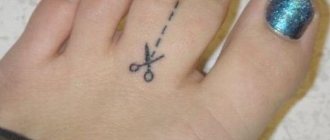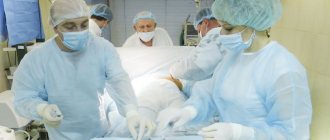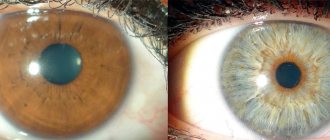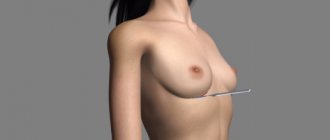Ear plastic surgery (otoplasty) is an operation to correct the shape and size and restore the ears.
Vladimir Aleksandrovich Kosinets has a wide range of operations to correct the shape of the ears, and held the position of leading employee of the department of plastic and reconstructive surgery at the Federal State Budgetary Institution Scientific Center of Otorhinolaryngology of the Federal Medical and Biological Agency of Russia. The experience gained helps to relieve patients of ear defects quickly and as comfortably as possible. The doctor also deals with the correction of the shape of the nose and the curvature of the nasal septum.
HOW IS EAR CORRECTION DONE?
There are aesthetic and reconstructive otoplasty:
- Aesthetic surgery is most often aimed at correcting protruding ears. This operation takes place under local anesthesia. Excess skin along the back surface of the auricle is excised. Next, excess cartilage is removed and the auricle is fixed in the desired position. The wound is sutured with a cosmetic suture and a special compression bandage is applied.
- Ear reconstruction surgery is more complex. To do this, a graft is taken from the costal cartilage, it is modeled in accordance with the shape and proportions of the ear, after which skin grafting is performed.
A few hours after the correction, the patient can go home. Sutures are removed 8-10 days after surgery. The final result can be assessed in 3-4 months.
Indications
There are medical and aesthetic indications for such an operation. Among medical ones:
- congenital or traumatic pathologies of the auricle, up to complete absence. In this case, reconstructive otoplasty is indicated: the creation of an auricle from the patient’s tissues or using an implant.
Aesthetic indications include the following characteristics:
- excessive protrusion of one or both;
- excessive or insufficient size;
- deformations that cause negative emotional experiences.
Patient age: over 6 years. Contraindications include blood clotting disorders, as well as such serious systemic diseases.
REHABILITATION AFTER OTOPLASTY
You can return to everyday work after 10 days. Otoplasty is one of the most minimally traumatic operations, but there are certain nuances that will introduce some discomfort in the patient’s life:
- During the first 10 days, you must constantly wear a special compression bandage. Then the bandage will only need to be worn while sleeping for the next 3 weeks.
- For the first week, sleep with your head elevated to prevent swelling.
- Do not exercise for a month, do not visit the sauna, swimming pool, or solarium.
Postoperative period
On the first day after ear surgery, moderate pain is possible; during this period, painkillers are prescribed.
On average, the first week after surgery should be spent wearing an elastic bandage that will support the ears in the desired position and protect them from possible damage. Subsequently, for up to two months, the elastic bandage will be required only during sleep.
A week later, the surgical sutures are removed (in some cases - after 10 days).
Washing your hair is postponed for at least 2 weeks, contact sports are postponed for 2 months.
CONTRAINDICATIONS
- Inflammatory diseases of the external and middle ear
- Diabetes
- Bleeding disorders
- Acute infectious diseases
- Menstrual cycle
PRICES FOR OTOPLASTY
| NAME | Price, white rubles |
| Otoplasty | 1500 |
Vladimir Aleksandrovich Kosinets conducts consultations in Minsk and Vitebsk. You can make an appointment by phone +375 25 902 19 44.
Result
As a result, you get ideal or close to ideal ear shapes without any traces of surgical intervention. In addition, the otoplasty offered by the clinic in Minsk allows you to get advice from a specialist at any time and get answers to all your questions.
For the operation it is necessary to undergo a number of tests:
- Complete blood count + platelets + coagulability + blood group + Rh factor
- Coagulogram
- General urine analysis
- Blood test RW
- HIV test
- Fluorography (within 12 months)
- ECG with interpretation (valid for 1 month)
- Blood sugar
- Blood test for hepatitis B, C
- Physician's conclusion for persons over 60 years of age.
Why is it necessary to undergo treatment and diagnosis at a medical center?
Our doctors are true professionals in their field who perform operations of any complexity with high quality! All types of diagnostics and surgical interventions are carried out exclusively on modern equipment, which allows the patient to receive the highest quality effect of the intervention.
Entrust your beauty to medical professionals!
Question answer
How long does it take to recover after surgery?
After the operation, the patient does not need to be hospitalized. Wound healing occurs quite quickly - within 7-10 days.
What are the advantages of a cosmetic stitch on the ear?
Firstly, it leaves no marks after healing. Secondly, a cosmetic suture allows you to preserve the sensitivity of the patient’s tissues as much as possible.
How much does otoplasty cost in Minsk?
Prices for ear plastic surgery in Minsk depend on the type of procedure. We recommend that you familiarize yourself with the prices in the appropriate section and attend a free consultation in our center.
Read reviews from our patients >>
photos...before and after...
FAQ
AT WHAT AGE IS IT BEST TO DO EAR PRACTICE?
Otoplasty is recommended for children aged five years and older. This is the age when the child should soon go to primary school, and the operation, in turn, will help the child avoid ridicule from classmates. The child is old enough to cope with the operation both physically and emotionally.
HOW PAINFUL IS THE PROCEDURE?
After ear surgery, there will be some recovery time, especially for young children who tend to scratch and touch their ears during the recovery period. The patient will be prescribed painkillers to reduce discomfort, and a postoperative rehabilitation plan will be prepared to help speed up the healing process.
HOW SOON WILL THE RESULT BE SEEN?
After surgery, a compression bandage is applied to the ears, usually from the top to the bottom of the head. It is worn during the post-operative recovery period. Once the bandage is removed, the patient will immediately see the results. The days of control appointments will be scheduled by our specialists, so that the healing process will be monitored, and the stitches will be removed in stages. This is necessary to ensure that the ears are securely and permanently fixed in their new position.
HOW LONG-TERMING IS THE RESULT?
Ears usually develop faster than the rest of the body. For this reason, plastic surgery performed is permanent. Even age-related changes will have minimal impact on the ears.
When will otoplasty help?
Science can help change your appearance and get closer to ideal. Many physical disabilities cannot be changed on your own. A plastic surgeon will do this.
Otoplasty will help eliminate the following deficiencies:
- asymmetry;
- unattractive shape of the ears;
- irregular, ugly shape of the earlobe;
- complete or partial absence of the auricle and its elements;
- protruding ears.
You can erase all this from your life once and for all by making up your mind, coming to a consultation, discussing the details and nuances, paying the cost of services, and signing the necessary documents. The result will bring long-awaited relief. Confidence in your appearance is a pleasant feeling that you will finally have to experience.
Weighing the pros and cons
Plastic surgery requires serious treatment. Otoplasty is no exception. After the procedure, a person may encounter misunderstanding and condemnation from loved ones if the reasons are the desire for perfection. People feel much better about plastic surgery after injury, illness, and reconstruction. This should be taken into account, as well as the fact that after reaching the age of majority, every person has the right to use the services of a plastic surgeon.
The hospital guarantees patient confidentiality. Access to data on surgery, its features and reasons is limited. A person can hide information about his or her health in some cases, but in others he must provide it.
Before deciding to undergo otoplasty, you should weigh the pros and cons. Changes will have a positive impact on mental health, self-esteem, level of aspirations, and will become a source of psychological comfort. However, a negative reaction is always likely from family, relatives, and friends.
The decision must be balanced, justified, justified. It is advisable to enlist the support of loved ones.
Surgeons at partner clinics
Mechkovsky Sergey Sergeevich
Microsurgeon, plastic surgeon (Confidence Medical Center, Republican Center for Plastic and Reconstructive Microsurgery), surgeon of the highest qualification category, work experience 9 years
Ear plastic surgery or otoplasty is a surgical operation aimed at eliminating defects in ear size and correcting protruding ears. During surgery, large ears are reduced by removing a section of cartilage, which allows the ears to fit closer to the head using a permanent suture.
Otoplasty is one of the many high-quality plastic surgeries performed by our surgeons in Minsk. During the consultation with the patient, the surgeon will discuss the upcoming operation in detail, including possible risks, costs and guarantees.
Otoplasty will be the right solution for people suffering from protruding ears. Most patients who are considering ear surgery:
- We went through ridicule about our ears.
- They want their appearance to become ordinary, without prominent ears
- Are between the ages of 4 and 14 years and have fully formed ears
- Despite the fact that otoplasty is performed more often among children, adults can also resort to this operation.
Cost of the operation
The price of the operation is from 500 BYN. (1 side)
Please check with the company managers for the current cost of the operation.
Calculate the cost of plastic surgery
Treatment in Belarus +375 29 7793774
- The Triostyle company will take care of organizing, supporting, and booking medical services for you in the best clinics
- We offer free review of applications and consultation on selecting a clinic, doctor and treatment options
- You do not overpay anything - payment for medical services is carried out directly in clinics and medical centers
Progress of the operation
Currently, there are about 200 different methods of performing otoplasty for adults and children. In any case, the incision is made behind the auricle so that traces of the operation are invisible. Let's look at commonly used operation options here:
- The skin peels off from the back surface of the outer ear and the area of the mastoid process of the temporal bone. Next, a small part of the muscle tissue is excised so that the ear cartilage can be approached. After this, non-absorbable suture material is used to fix the cartilage to the periosteum of the temporal bone, thereby reducing the angle between the auricle and the surface of the head. A flap of skin is placed in place, and excess skin is excised.
- If the problem lies in the insufficient formation of the antihelix, then the following option of otoplasty is possible: a strip of skin is excised behind the ear, soft tissue is peeled off and white silk threads are passed through the cartilage. They are tightened in such a way as to give the antihelix the desired shape.
- Another way to create a convex shape of the antihelix is to make notches. After peeling off the tissue on the cartilage, using a scalpel or a special rasp, the surgeon makes incisions. Due to this local thinning, the cartilage begins to bend in the direction opposite to the one on which the manipulations were performed. Thus, the antihelix takes on the necessary shape.
What is otoplasty
Surgery to correct the shape and size of the ears is called otoplasty. In this direction, there are 2 types: aesthetic otoplasty deals with the correction of protruding ears , and reconstructive otoplasty deals with the restoration of the ears after injuries or as a result of congenital defects. This operation is performed only on the outer ear, so it does not affect the function of the auditory analyzer in any way. There are no ways to correct protruding ears at home using conservative methods; only plastic surgery is guaranteed to give a lasting result.
During ear surgery, the plastic surgeon adheres to some fundamental positions:
- In the auricle there is a helix and an antihelix. The helix is a cartilaginous rim that runs along the edge of the outer ear, and the antihelix is cartilage located in the center of the auricle. So, this very anti-helix, in which the essence of the problem most often lies, should not cover the curl after plastic surgery.
- The main task is to remove protruding ears in the upper third of the auricle; some distance in the lower part is allowed.
- The distance between the ear and the surface of the head in the upper third should be 1 cm, in the lower third - 2 cm.
- Any changes should not affect the depth of the behind-the-ear space.
- The formed antihelix should be smooth and with clear contours.
Ear plastic surgery - otoplasty
In our Center for Plastic Surgery and Cosmetology “Medrekplast” in Minsk
surgeons are sufficiently qualified and experienced to perform
otoplasty
.
Contraindications:
- diseases that are accompanied by reduced blood clotting
; - hypertension
, severe
cardiovascular diseases
; - diabetes mellitus
and severe
thyroid
; - acute and chronic infectious
diseases, including skin diseases; - collagenoses
; - pregnancy
; - days of menstruation
Photos of patients before and after surgery to correct the shape of the ears
which were carried out at our
Center for Plastic Surgery and Cosmetology “Medrekplast” in Minsk:
Preparing for surgery
Before the operation you must:
- complete all prescribed examinations and tests
- talk to an anesthesiologist
- Tell your surgeon and anesthesiologist about all medications you are taking
- During a consultation with a plastic surgeon, it is advisable to conduct a computer simulation
of the future shape and size of the ears
Two weeks before surgery you cannot:
- smoke
- drinking alcohol
- sunbathe, as ultraviolet radiation suppresses the immune system
- take medications that reduce blood clotting
, including aspirin
On the day of surgery:
- Three to four hours before surgery, large meals and liquids are prohibited. But this issue should be discussed with the anesthesiologist, as this directly affects the safety of pain relief.
- Do not apply creams or make-up
. It is advisable to strive for the absence of skin irritation.
How is the operation performed?
You come with ready-made tests. The administrator draws up a medical history. You fill out the necessary documents and sign consent for the operation. The administrator escorts you to the room, where you change into disposable underwear, which is required in order to enter the operating room. Then you go to the surgeon and clarify all the details with him.
This is followed by an examination by the surgeon and anesthesiologist, after which a decision is made on the possibility of performing the operation at the moment. A photo of your head is usually taken
in several projections.
In the vast majority of cases, the operation is performed on an outpatient basis. For adults, local anesthesia is used; for adolescents, general anesthesia can also be used. The operation lasts 1-2 hours.
The surgeon makes incisions in the skin behind the ear and peels the skin away from the cartilage. Then the excess cartilage is excised and an internal suture is placed on it, which remains and holds the cartilage in place. Next, excess skin is removed and an external cosmetic suture is applied. A special elastic band is put on the head, which holds the ears and protects them from accidental damage.
After operation
After the operation, you will spend some time in the recovery room, and if you feel well, you can go home. In more complex cases, you will be kept in the clinic for a day for observation.
Possible after surgery
a rise in body temperature to 37.5°C, swelling in the ears, numbness and tingling, which
is normal and gradually disappears
.
To speed up recovery, physiotherapeutic procedures
.
Minor pain persists for 3-4 days, hematomas completely resolve within 2 weeks. If your job does not involve heavy physical activity, you can go back to work in a week. The full rehabilitation period lasts 5-6 months.
What to do after surgery:
- a protective fixing bandage
for two weeks , and for 2 months put it on while sleeping. - During sleep, the position of the head
should be higher than the position of the chest for several days. - To prevent infectious inflammation, take prescribed antibiotics for 5 days
. - It is advisable not to take spicy food or excess liquid
until swelling and inflammation subside. - For two months you need to protect your ears from physical impact , sun and wind
. - For one and a half months, visiting the bathhouse and sauna
, as well as any thermal procedures, is prohibited. - Avoid smoking and large doses of alcohol
. - You can’t wash your hair
or overexert yourself
physically
for two weeks . - If necessary, visit your doctor in a few days for a follow-up examination
. - For several days do not take medications
that reduce blood clotting (aspirin, ibuprofen, naproxen, etc.). Instead, use acetaminophen (Tylenol, etc.) for pain relief.
Contact your doctor immediately if you experience any
of the following conditions:
- Dyspnea
- Chest pain
- Unusual heartbeat
- Bleeding
Complications
Possible complications of rhinoplasty:
In 0.5-1% of cases, complications are possible in the early and late postoperative periods, which usually arise due to the patient’s failure to comply with the surgeon’s recommendations or due to medical errors, much less often due to unexplained reasons.
Early complications include:
- General and local (epidermal blisters) allergic reactions to medications and local anesthetics.
- Complications associated with anesthesia (in children and adolescents).
- Inflammatory process of soft tissues with long-term persistence of pain, swelling and hyperemia (redness), development of phlegmon.
- Perichondritis (inflammation of the perichondrium).
Late complications:
- Cutting through sutures placed on cartilage.
- Formation of hypertrophic or keloid scars.
- Necrosis (tissue death) of cartilage.
- Lack of the intended effect of the operation (return to the original state).
- Deterioration of the aesthetic effect due to inadequate correction or spontaneous deformation (warping or over-tightening of the auricle, distortions like “telephone” or “reverse telephone” deformation, emphasized cartilage relief, asymmetry of the ears).
All these complications directly depend on the skill of the doctor, so choosing an experienced plastic surgeon with the appropriate qualifications
, You will reduce this probability to a minimum.
These are the specialists who work in our Center for Plastic Surgery and Cosmetology “Medrekplast” in Minsk
, who will perform the operation at the highest professional level.
Questions and answers
Are scars noticeable after surgery?
— The incision is made from the back surface of the auricle, that is, it is completely invisible to others.
At what age is it best to have otoplasty?
— If a child has congenital protruding ears, then there is no need to delay the operation. After all, children with lop-eared ears often become objects of ridicule from their peers, and the child develops complexes. The optimal age is no earlier than 6 years.
Is it possible to have hearing loss?
— No, plastic surgery of the ears does not affect hearing in any way.










